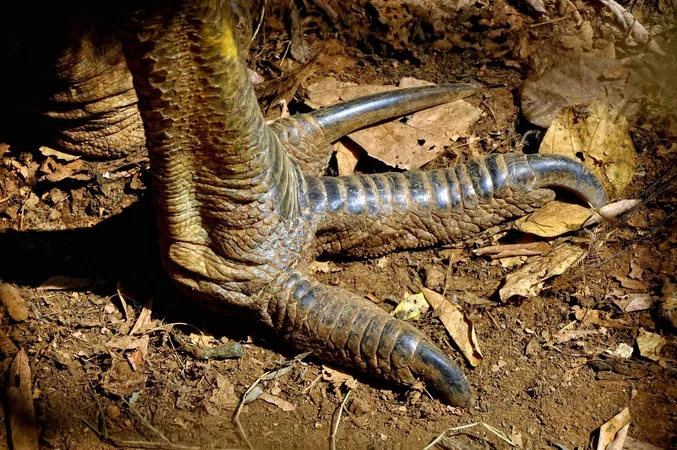
Meet the Cassowary: The Most Dangerous Bird You’ve Never Heard Of!
2025-06-01
Author: Noah
The Unexpected Threat Among Flightless Birds
When we think of flightless birds, aggression isn’t the first thing that comes to mind. We might picture a serene peacock meandering through a zoo, or reminisce about the long-extinct dodo that vanished due to its docility. Then there's the ostrich – the world’s largest flightless bird – known to kick dangerously, causing serious injuries to anyone who invades its space.
Enter the Cassowary: A Living Dinosaur
But there’s a bird that truly demands respect and caution: the cassowary. Thriving in the lush environments of northern Australia and New Guinea, this bird looks straight out of the Cretaceous period. Towering up to six feet tall and weighing around 130 pounds, it’s an imposing figure that deserves your attention.
Covered in glossy black feathers and sporting a unique casque on its head, the cassowary is both magnificent and menacing. Its casque, a keratin structure, remains an enigma, with theories suggesting it aids in navigation through dense forests or amplifies its heavy calls.
The Ferocity of the Cassowary
Territorial by nature, especially the larger females, cassowaries fiercely guard their domain. When threatened, they don’t hesitate to charge. Their most fearsome attribute? Their legs, each armed with a three-toed foot topped with a dagger-like claw that can reach up to five inches. These claws are not mere decorations; they are lethal weapons capable of inflicting severe wounds.
There’s a chilling history of cassowary confrontations with humans. One tragic incident from 1926 saw a 16-year-old boy lose his life after attempting to strike one of these birds. Though such fatalities are rare, injuries are far more common.
Speed and Agility: Nature's Versatile Predator
Cassowaries are more than just tough; they’re incredibly fast and agile, capable of sprinting at speeds of up to 30 miles per hour and leaping an astounding five feet. They can even swim, making them formidable inhabitants of their dense rainforest realms.
Why the Aggression? The Psychology of the Cassowary
So, what fuels their aggressive behavior? One theory hinges on their solitary nature and the significant parental investment of males, who incubate the eggs and rear the chicks alone. This protective instinct can lead to aggressive responses when they feel cornered or threatened.
Cassowaries: Guardians of the Ecosystem
Conservationists emphasize that cassowaries are not the villains they seem. Their aggression is merely a defense mechanism, and they play a vital ecological role by dispersing seeds for various plant species. Their survival is critical for maintaining the health of their environment.
Living in Harmony with the Cassowary
Respect is key when coexisting with cassowaries. Maintaining a safe distance and avoiding interactions is essential for ensuring peaceful encounters between humans and these powerful birds. Remember, while they may seem dangerous, they are simply trying to protect their territory and play their role in the ecosystem.









 Brasil (PT)
Brasil (PT)
 Canada (EN)
Canada (EN)
 Chile (ES)
Chile (ES)
 Česko (CS)
Česko (CS)
 대한민국 (KO)
대한민국 (KO)
 España (ES)
España (ES)
 France (FR)
France (FR)
 Hong Kong (EN)
Hong Kong (EN)
 Italia (IT)
Italia (IT)
 日本 (JA)
日本 (JA)
 Magyarország (HU)
Magyarország (HU)
 Norge (NO)
Norge (NO)
 Polska (PL)
Polska (PL)
 Schweiz (DE)
Schweiz (DE)
 Singapore (EN)
Singapore (EN)
 Sverige (SV)
Sverige (SV)
 Suomi (FI)
Suomi (FI)
 Türkiye (TR)
Türkiye (TR)
 الإمارات العربية المتحدة (AR)
الإمارات العربية المتحدة (AR)